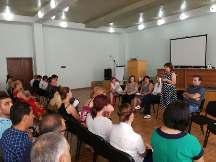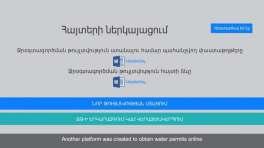
34 minute read
RESULT AREA 3: PUBLIC AWARENESS RAISED AND BEHAVIORAL CHANGE FOSTERED AMONG WATER USERS
Pre-project situation: Baseline survey, expert interviews, stakeholder analysis conducted at the beginning of the project and the meetings with the residents, local authorities of target communities as well as with other stakeholders indicated that the main cause of the depletion of groundwater resources in Ararat Valley is poor performance of all stakeholders – water users (farmers, fish-farms, local governments), water managers (water user associations, local governments), decision-makers (MTAI and ME with their relevant structures). The study revealed that only 30% of residents know their water rights and responsibilities and this refers predominantly (75%) to the senor residents (from 45 years old and above), whereas only 7% of youth (18-25 years old) knew their rights and responsibilities. In terms of receiving information on groundwater issues, the residents of Ararat Valley trusted more their neighbors and local governments. The trust in the media, central government and water user associations was significantly low - both as sources of information and as problem-solvers. So, the trust plays a key role in receiving information about water issues, even if there is higher possibility that the information provided by relevant state authorities, service providers and media might be more accurate and evidence-based than the information disseminated through the word of mouth and by local governments.
The USAID PURE Water project implemented a vigorous strategic communication campaign tailored to each stakeholder group and aimed at making a positive behavior change of stakeholders with regard to efficient management and use of groundwater resources in Ararat Valley.
Advertisement
Achievements
Increased public awareness and behavioural change of stakeholders due to tailored outreach, public awareness and strategic communication campaigns using a mix of integrated marketing communication tools
Main affected stakeholders:
Community residents and local governments
Schoolchildren and youth
Government water sector decision makers and National Assembly relevant standing committee
Water User Associations
Fish-farms
6,260 People reached out by awareness campaigns in the target community Events and festivals; educational workshops; peer to peer exchange among communities; educational tours to fisheries, artesian wells Over 2,000,000 Total people reached out in Ararat Valley and nationwide Yerkir Media and H1 TVs, Hetq online newspaper, stakeholder Websites and FB pages
Main instruments used:
Community events and festivals on national and international water and environmental days.
Educational tours: fish-farms, artesian wells, farms with drip irrigation, wetland.
TV programs on drinking and irrigation water issues with participation of stakeholders.
Best Practice exchange: fish-farms
Public Service Announcements targeting different stakeholder groups in water sector.
Project Documentary: summary of the project achievements and lessons learned.
News articles: voicing and raising awareness of water users
Project Facebook page: https://www.facebook.com/PUREWaterProject/
Project Newsletters
3.1.1․ Develop common messaging regarding water resource quality and use in collaboration with the government and other public stakeholders.
The behavior change communication campaign has been implemented under the two umbrella messages: Communication messages were identified on a participatory basis by the stakeholders and experts in two messaging workshops. The stakeholders‟ workshop was attended by the representatives of relevant ministries and governmental agencies, local Some messages of the awareness campaign
The future of Armenia's water resources depends on each and every one.
Recycle industrial waste and prevent pollution of water bodies
Know your rights. Demand access to clean, affordable, quality drinking water and regularly scheduled irrigation water. governments, CSOs, fish-farms, USAID and other
PURE Water project MESSAGES
Umbrella Messages
Water is precious, every drop is special Ջուրը կայնք է, ամեն կաթիլը՝ թանկ է
Find your way to save water Գտի՛ր ջուրը խնայելու քո ձևը
international organizations. The USAID Global Development Lab experts supported in facilitation and summarizing of the workshop. The expert workshop was initiated and supported by the Coca-Cola Hellenic Bottling Company (CCHBC), Armenia and was attended by the communication experts from non-profit and private organizations. Then the messages were checked and finalized in the multi-stakeholder focus groups (Annex RA 3-30). As a result, umbrella messages for strategic communication campaign and stakeholder-specific messages were developed (Annex RA 3-3). The USAID global development lab experts held a special training session on behavioural change communication (BCC) techniques for the PURE Water project staff. Based on the outline developed with the Global Development Lab experts, the PURE Water project communication team drafted a BCC strategic plan for the PURE Water project (Annex RA 3-19). Once the plan was finalized, the PURE Water project team in cooperation with CCHBCA experts designed a detailed
communication campaign action plan.
A table calendar with messages
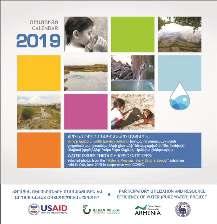
(Annex RA 3-11).
BCC strategy and the campaign action plan guided the PURE Water awareness and outreach campaign throughout the life of the project.
3.1.2․ Develop and implement public awareness campaigns using a mix of integrated marketing communication tools
PURE Water BCC Strategy designed diverse interventions for the implement public awareness campaign.
Community events and festivals: Various events and festivities in Ararat Valley were good forums for PURE Water project outreach campaigns, for raising awareness of residents, children and youth, local authorities, and other stakeholders on the groundwater problems in Ararat Valley, to encourage them to be more engaged and be part of the solution. The events and festivals have been conducted on national and international water and Water Festivity- VARDAVAR environmental days. Groundwater topic has been voiced in different ways including performances, dances, painting, photo and knowledge contests, cleaning up the canals, and testing water qualities in Vardavar is a traditional Armenian festivity implemented after the harvest of wheat (grain) and devoted to the water worshiping. On 26 July, 2019, the schoolchildren from the partner communities of Ararat and Armavir marzes gathered in the Lovers‟ Park in artesian wells and fish-farm ponds, etc. It is important Yerevan to participate in the event “Towards Vardavar Holiday: to note that the local communities and the active civic the symbol of water at the roots of Vardavar”. The aim of the groups were engaged from the very beginning in the event was to increase the awareness about the efficient development of the campaign, and coined their own management of groundwater resources in Ararat Valley and event programs, readily voicing the water related highlight the importance of water in our life.
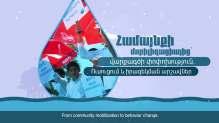
The event commenced with a quiz on the topic of water resources. The pupils from Ararat and Armavir presented their knowledge obtained as a result of the classes and study tours organized in the framework of the PURE Water project. A specially tailored play by “Epsidon” theatrical group combined with the performance of “Akunk” Traditional Song Ensemble on the topic of water and Vardavar added a special flavor to the event.
problems. Their interest and readiness to join the campaign, their contribution to the organization and implementation phase of the campaign is a bold step leading to behavior change.
The following community events related to the groundwater issues in Ararat Valley has been conducted during the implementation of the project (Annexes: RA 3-24; RA 3-33):
World Water Day Earth Day World Climate Day World Environment Day World Water Monitoring Day Water festivity-Vardavar World Clean-up day Ararat Valley Groundwater Preservation Day Schoolchildren and teachers from Aknalich, Aratashen, Yeraskhahun, Yeghegnut communities of Armavir Marz and Poqr Vedi, Vedi, Khachpar, Masis, Baghramyan, Burastan and Berqanush of Ararat Marz participated in the event, which was open for everyone, so the morning visitors of the Park happily joined in.

At the wrap-up of the event, the children had an opportunity to splash small amount of water on each other. More than 250 people participated in the event․. The event was covered by the online media and TV: Vardavar event coverage by Aravot daily Vardavar event coverageby CCHBC
High-rank officials joined the community stakeholders during the public awareness campaign: Deputy Chief of US Mission in Armenia, USAID Armenia Mission Director, USAID Armenia Sustainable Development Office Director, the Head of Water Committee, and Mayors.
VARDAVAR
The overarching message of the public awareness and outreach campaign was “Water is precious, every drop is special.” USAID support was leveraged by the Global Coca-Cola Foundation which provided a grant to the Urban Foundation, the implementing partner. CCHBCA also cooperated with PURE Water based on the MoU signed between USAID Armenia and CCHBCA (Annex RA 3-21).
Awareness-raising through hands-on publications, information dissemination and visibility: Water sector-related information has been prepared for and shared with different stakeholder groups. Information was made accessible through published materials, public information materials, and online means of communication. Below is the list of public information and dissemination channels: Project Documentary: Covers the project implementation and summarizes the results. The documentary has been widely disseminated to the stakeholders and general public։. Publications and public information materials։ - Water User Directory (Annex RA 3-5). This is a Directory of Water Authorities and Managers. It briefly explains who is doing what in water sector and provides contact information for key decisionmakers and service providers. - Water is a guarantee for life (Annex RA 3-9). - Public participation in water resource management (Annex RA 3-8). - The right to receive information (Annex RA 3-1). - Water and human health (Annex RA 3-4). - Q&A: Drinking water (Annex RA 3-10). - Q&A: Irrigation water (Annex RA 3-15). - Best practice for water efficiency: small and medium fisheries of Ararat Valley (Annex RA 3-7). - Bookmarks for schoolchildren (Annex RA 3-6). - The project one-pager Newsletters: covered and updated the stakeholders and general public about the project progress on semi-annual basis increasing public awareness on subject matter and the project visibility (Annexes RA 3-26 - RA 3-27). Websites and Facebook pages: covered and disseminated the project activities ensuring awareness raising on groundwater issues and visibility of the project: - PURE Water project Website and PURE Water Facebook Page. - Armavir WUA website. - Vedi Municipality website. - Other target communities websites and Facebook pages. Signs: for target communities as partners of the project, for small-scale water infrastructure projects to ensure visibility (Annexes: (Annex RA 3-20; RA 4-16).
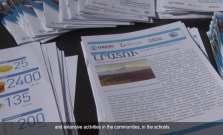
Educational tours: Study visits and exchanges among different stakeholders for awareness raising, learning, and exchanging best practices were one of the campaign‟s tools (See also the section 2.2.). Young generation was intensively involved in this activity. Study tours allowed participants, apart from what they learned in the classrooms and read in the information materials, have an actual exchange with the field practitioners, witness the real situation in Ararat on spot with, be part of solutions by doing and experimental water tests and analysis. Such practical learning process, communication, exchange of experiences and knowledge transfer among stakeholders promoted forging mindful behavior especially for future generation to the groundwater resources. The following study tours were organized within the project: Khor Virap Wetland: It is located in the ancient Arax riverbed and included in Ramsar list of wetlands of international importance. Participants learned why the wetland was vital for entire ecosystem. The marsh plays a significant role in flood mitigation downstream and in sediment trapping and local irrigation. Fisheries: - To learn about best practices of using groundwater saving technologies and mechanisms by fish-farms. - To test and compare the quality of incoming and outgoing water in the fish-farm ponds. Karin tree nursery: young participants saw and learned how drip irrigation works and why it is important for irrigation.
Aknalitch Lake: young participants learned how the lake is connected with the ecosystem and tested the water quality. Eco-camp: young participants exchanged useful practices of groundwater protection in neighbouring communities and designed action plans for eco clubs to be established in Ararat Valley to promote environmental education. World Clean-up Day - Tour to Pokr Vedi: young participants got familiar with the piloting of a “trash net” technology designed by their peers to catch the garbage in the irrigation canals, thus preventing water pollution and promoting irrigation water quality. They also presented to their peers the results of clean-up activities they initiated to clean the water basins existing in their communities. VARDAVAR Tour։ A tour to Yerevan to celebrate VARDAVAR water festivity (See also: “Community events and festivals” in the section 3.1.2): This was a learning experience for target communities youth: They learned how and why their ancestors worshiped water resources. They also shared knowledge about water resources with peers.
3.1.3․ Conduct baseline and follow-up consumer and stakeholder surveys on water quality, use, and responsibilities.
At the inception phase of the project, a baseline household survey was conducted in six towns (Artashat, Ararat, Armavir, Masis, Vagharshap, Vedi) and 16 villages randomly selected in the Ararat Valley (8 in Ararat marz, and 8 in Armavir marz).
The survey instrument was developed by a contractor in consultation with the relevant experts from CWP, an NGO focused on scientific and ecological issues, ELRC at YSU, as well as the staff of UFSD and USAID ASPIRED project.
The structure of questionnaire included the following sections/questions (Annexes: RA 3-17; RA 3-29): 1. Availability, quality and access to drinking and irrigation water 2. Awareness about issues related to drinking and irrigation water in the community 3. Civil activity, participation in decision making and monitoring activities related to water resources 4. Socioeconomic status and demographic profile of households, education levels; ICT skills, etc.
The survey revealed problems with regard to drinking and irrigation water quality, poor infrastructure, low trust in drinking and irrigation water suppliers and national decision-makers, and media as problem solving institutions and sources of information, extremely low civic engagement rate in decision-making process related to water issues, almost lack of awareness and knowledge regarding water issues and predominantly, among young generation (Annex RA 3-2).
The final evaluation conducted at the end of the project aimed at learning about the outcomes of the project by understanding the factors that contributed to or challenged the achievement of set targets and by identifying key lessons that would help to develop improved future actions in efficient and productive management and use of groundwater resources and in the water resources as a whole (Annex RA 3-28).
The evaluation included desk research, in-depth interviews with experts, policymakers, various partners and stakeholders, as well as with the practitioners in the water sector at the national and local levels, and focus group (FG) sessions among stakeholders and community active residents that participated in the relevant project events and water users from selected communities. The experts and policymakers include those who were interviewed within the baseline assessment and those who have been involved during the implementation of this project.
The desk research is based on the analyses of project reports, baseline assessment and mid-term evaluation of the project, as well as semi-annual monitoring reports of UFSD. The project relevance, effectiveness, efficiency, impact, and sustainability are also analyzed as separate chapters.
The evaluation showed that the PURE Water project is QUOTE
relevant to the needs and priorities of the beneficiaries. It helped to increase awareness of water users in Ararat Valley related to water issues and helped to contribute to changing their behavior valuing the importance of every drop of water and saving water resources.
School children, youth, local government (LG) staff and other active residents from 12 target communities were educated and capacitated to advocate for solving drinking and irrigation water issues (through transparent decision making in water
management) in their communities.

“We (the teacher with schoolchildren) had a study tour to fisheries in Hovtashat village … Children understood that the overuse of groundwater resources by fisheries can affect the quantity of water for irrigation and that local residents will not have enough water to irrigate their land plots. We have also sent letters to fisheries asking them to conserve groundwater resources. In fisheries that we visited with children, water-saving technologies were used” (School teacher, Vedi, Ararat region)
QUOTE
“Our cooperation related to the analysis was very broad, including legal and policy related aspects; several joint meetings were conducted in cooperation with the project both in Yerevan and the regions with the targeted population, I went to Yerkir Media to make a presentation in the framework of the project”‟ (Head of Water Committee). Furthermore, community residents, together with the key experts (water sector public advocacy network (WPAN) members) and policymakers were involved in constructive discussions to identify gaps in water-related legislation hindering participatory management and the use of water resources.
These discussions led to the development of Strategy and a Road Map, as well as a package of recommendations (submitted to the GOAM and the National Assembly), to amend existing laws related to water.

Transparency and accountability are in place, residents in target QUOTE communities are more vigilant and demanding regarding water issues, “Participatory budgeting helped a lot our target communities are mobilized and actively participate in community people; the members of the community life, target communities, including schoolchildren and youth, are better council did not know anything about educated and aware of water issues, as well as of their water rights, and budgeting prior to the participatory protection mechanisms. budgeting support by the project, now they do a public hearing following all the Introduction of public oversight regulations learned during the project QUOTE mechanisms (phone survey trainings before deciding on the budget.” „We used phone survey to find out if tools, participatory budgeting, (Mayor of one of the target communities). our residents would like to install social audit, town hall meetings, water meter, what is the quality and etc.) and community monitoring schemes for water quality and efficient use access of water, if the people will increased participation of residents in decision making processes, increased pay for the installation of water their awareness on water resources management issues, and contributed to meters.” (A male respondent from the target communities). more efficient use of water resources. QUOTE “Our community residents have prioritized our city The Project was effective as it reached the key milestones and all greening plan for many years. During public targets of indicators in an efficient manner, within a relatively short hearings our residents have always agreed that period of time (3 years) and within a reasonable budget of USD having green spaces is a priority for our city, thus, 1,042,634.84. The variety of activities and interventions they voted for this project (irrigation of city green implemented within the PURE Water are also indicators of zone) within the PURE Water project. Our drinking efficiency, and the successful mechanisms and tools implemented water pipes had been recently replaced and there within this project (such a Citizen Journalists, Citizen Scientists, were no issues with drinking water. Our irrigation Phone survey tool, traps for garbage installed in irrigation networks, etc.), especially through the small grant projects, can be models of interventions to be replicated by the State and by other donors in system was also in a satisfactory shape as many investments were made there in the past. ” (Mayor of one of the target communities) the water sector.
Thanks to this project thousands of households in the target communities gained access to an uninterrupted supply of drinking water, while others benefitted from irrigation systems constructed/renovated in their communities.
3.2.1․ Stakeholder mapping, assessment, and analysis conducted to gain an explicit understanding of the behaviors and motivations and capabilities of different stakeholders involved.
Stakeholder behaviour change analysis Within the framework of PURE Water project, stakeholder analyses were carried out related to water usage in Ararat Valley, Armenia. The first analysis was conducted within the baseline survey at the beginning of the project (Annex RA 3-32) and the second one – at the end of the project (Annex RA 3-25) to see if any changes occurred in the interests and attitudes of stakeholders in this period of time. There are a large number of stakeholders in Armenia‟s water sector (Annex RA 3-18). While the governmental structures are responsible for developing policies and overseeing the implementation of various projects in the water sector, there are a number of international/bilateral donor organizations that are funding drinking water supply, irrigation and other relevant projects as the State does not have adequate financial resources and capacities to fully satisfy the needs of the country in this sector. In addition to funding, those organizations also bring the best international practices to the country, showing how effectively water resources and systems can be managed, implementing pilot projects, and recommending the country to follow certain policies/procedures that are broadly implemented in the developing world. Research and consulting companies/institutions in the water sector have a valuable role in research, planning, technology development/promotion, and the state and donor organizations rely on the data and recommendations received from those institutions while developing policies or projects in the water sector. The role of NGOs, civil society and media is important in raising environmental issues, including water related issues (access, quality). Some NGOs have been able to obtain funding and implement small scale projects related to drinking water supply in communities that have faced such issues. During the study the stakeholders were interviewed on their interests, attitudes, and the level of influence on the Program as of February 2020. The capacities and mandates of all major stakeholders in the water sector have been analyzed and their influence on the viability of the program has been assessed to learn if the level of influence is high, medium or low. The general conclusion was that with the help of various awareness raising activities, trainings and consultations, small water infrastructure projects, and legislative assistance PURE Water project increased the interests and attitudes of water sector stakeholders in the project. The consistent work of the project together with the Velvet Revolution brought changes in the attitudes of WRMA, National Assembly, Water Committee, WUAs, and fish-farms. The project also empowered citizens, CSOs, media and fisheries involving them in advocacy actions, so that their voices could be heard by policy makers. So, their power increase as compared with what they had at the beginning of the project. (Annex RA 3-16).
3.2.2․ Develop and implement tailored outreach and strategic communication campaigns targeting different stakeholder groups based on the stakeholder analysis
The Stakeholder mapping and analysis developed at the beginning of the project indicated that in all stakeholder groups in Ararat Valley there were many stakeholders (ministries and agencies, water user associations, local governments, and fish-farms) which had a considerable influence on the functioning of the system, but were not quite interested in making the system work better. How the PURE Water project contributed to the addressing of this challenge?
Continued dialogue: The project set an ambitious task to launch and deepen a dialogue with all influential stakeholders to bring them all together to inventory and discuss problems in groundwater management and use, to find common grounds where their interests could match to lead to the mitigation of the groundwater problem in Ararat Valley with technical support and expert facilitation of the PURE Water project. Often it was cumbersome and took quite a time
to even commence such dialogue, then when started, run it with intermittent success, and later on gradually convert it to more meaningful and constructive dialogue. Among examples, are: - Dialogue on improvement of legislation: the passive “resistance” of decision-makers during the development of the Strategy and its Road map for policy and regulatory improvement, gradually turned to the cooperative behaviour (especially after the Velvet Revolution) with the project and other stakeholders during the legislative drafting. WUAs and fish-farms were not quite open. Communications with them were not productive. However, the project identified common interests and proposed diverse approaches to involve them in the discussions on the secondary water use, on drafting a new law on water users associations. - Cooperative approach to social audit: open and honest discussions among the project team, community residents and water user associations about the advantages of transparent governance and mutual trust, encouraged local governments and Armavir water user association to open-up its financial records for social auditing and report to the public on its revenues and expenditures. - Looking into fish-farms from a different angle: fish-farms are perceived by public as businesses which activity also caused depletion of groundwater resources in Armenia. Such pressure made fish-farms defensive to any dialogue, which was the case at the beginning of the project. The PURE Water developed an alternative approach: started a dialogue with small and medium businesses to help them identify best practices in using groundwater resources, and share them with peers.
TV programs: Although the exchange of information by the residents of Ararat Valley through word of mouth was prevailing, the baseline survey identified that 15% of population of Ararat Valley receive information about water issues from TV reporting. Therefore, PURE Water project supported airing of TV programs to cover also that segment of beneficiaries, which eventually would be disseminating the information to their cocitizens through word of mouth. TV programs were aired in different formats to deliver specific-audience-targeted project messages to the water sector stakeholders: water users – PURE Water Project coverage by Yerkir Media farmers, industries, water managers and decision makers. Taking into account that the residents of Ararat Valley residence preferences regarding TV companies, TV programs were aired by Yerkir Media TV company and Armenian Public Television, which also allowed to ensure nationwide coverage (Annex RA 3-31). TV programs were broadly disseminated through the social media of the project and target communities.
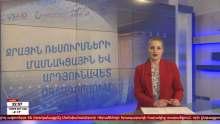

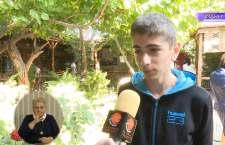

The formats of TV programs were interviews and debates. The programs covered the following topics: irrigation issues, drinking water issues, water users association and their relations with water users, water users‟ rights and responsibilities. A special program was devoted to the children‟s role to become main drivers of change in addressing groundwater problems in Ararat Valley. There was also a wrapup TV program aired on public television and Yerkir media, where the project team summarized the results and the lessons learned during the implementation of the project. PURE Water Project coverage by Yerkir Media
The guests of the TV programs were officials from relevant ministries, agencies, local governments, representatives from water user associations, CSOs, as well as experts and journalists.
Apart from the TV programs, the project activities were regularly covered by TV News reports, which in turn, raised awareness of residents of different groundwater issues and ensured the project visibility.
News Articles: Expert interviews and focus groups conducted at the beginning of the project, as well as baseline study showed that Hetq (https://hetq.am ) investigative journalists‟ online media are among those few online new media which was read by most of the residents, representatives of local governments, ministries, agencies and water user associations. The PURE Water project cooperated with Hetq to identify, investigate and cover key drinking and irrigation water problems, as well as water users‟ rights violation cases. They targeted decision makers, water user associations, fisheries and local governments. Hetq‟s articles have been further disseminated through its and the project‟s Facebook pages. Some of the Articles are (Annexes: RA 3-13-RA 3-14):
WUAs hide water-users contracts in desk-shelves WUAs doesn't encourage bank transactions Villages Yeraskhahun and Artashar fight for sewerage water Residents of Pokr Vedi wish to get rid of groundwater boreholes, while the government adds their number Khachpar has the most fertile landplotes but they are not cultivated because of water stress Drinking water suppliers are transferring delapidated water system from one to another: no investments E-governance tools for water use permitting and water use control World clean-up and world water monitoring days in Pokr Vedi WUAs continue to clean and transport litter from irrigation canals .
Two more articles were published in Global Water (http://globalwater.org/), an American website for sharing knowledge and ideas to solve global water challenges. One was entitled “Raising Voices to Save Water: Reducing Groundwater Loss in Armenia‟s Ararat Valley”, and the other article entitled “Citizen Journalists: Shining a Light on Water Management in Armenia” told the story of PURE Water Citizen Journalist Mane Minasyan from Vedi community who developed her journalistic and citizen skills immensely throughout the process of the project.
Raising Voices to Save Water: Reducing Groundwater Loss in Armenia‟s Ararat Valley Citizen Journalists: Shining a Light on Water Management in Armenia
PSAs: According to BCC strategy and campaign plan, public service announcements (PSA) were developed with the PURE Water project partners Media Initiative Center. The underlying concept of all PSAs was the idea that each of stakeholders can contribute to the efficient management and use of water resources if they demonstrate responsible behavior. The goal is same for all, but there is no single formula to this end, there are numerous ways, sometimes very unique and individual, to achieve that goal. Therefore, PSAs called to each individual and corporate stakeholder: Find your way to save water!
PSAs targeted different stakeholders and different issues of groundwater management: water contracts, drinking and irrigation water issues, payments for used water, drip irrigation, efficient use of groundwater resources by fisheries. Below are links to the
PSAs developed within the PURE Water project (Annexes: RA 3-22; RA 3-23):
Sign irrigation contracts: Find your way to save water Save while using: Find your way to save water Make payments timely: Find your way to save water Water Users: Find your way to save water Drip Irrigation: Find your way to save water Fish farms: Find your way to save water
PSAs were broadcast on TV channels with nation-wide coverage, they were disseminated further through social media, municipal websites, websites of water committee and water user associations, were demonstrated during many public events of the project.
The PURE Water project BCC campaign proved to be quite effective and targeted all project components from policy level to community and citizen mobilization using various tools specified for each stakeholder: water users, water manager, and decision-makers. The dynamics of change in stakeholders‟ behavior was visible at the end of the project:
DECISION MAKERS: FROM PASSIVE RESISTANCE TO COOPERATION IN IMPROVING LEGISLATION
When drafting the legal documents, the project worked with two Government Cabinets. Before the velvet revolution of April 23 2018, the Cabinet having representatives in the Strategy Taskforce was not quite enthusiastic about adopting the Strategy. After the velvet revolution, the PURE Water project continued to work hard with the Government and resubmitted the Strategy (with its Roadmap) to the new Cabinet. The new Government demonstrated commitment to cooperate with the project. It singled out the priority areas from the Strategy and asked the PURE Water project to help in drafting the legislation for the priority areas.
DYNAMICS OF CHANGE IN THE ATTITUDE OF WATER COMMITTEE TO MORE EFFICIENT WATER MANAGEMENT
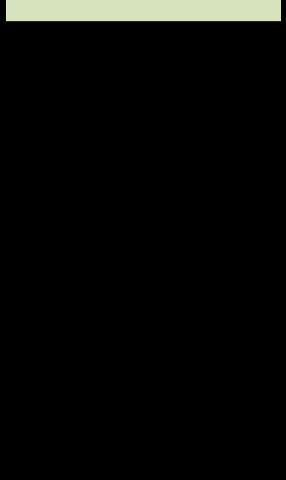
During the first year of the project the contacts with the Water Committee were quite passive: rare meetings were on official level. After changing the leadership, PURE Water continued to find ways to involve the Water Committee as one of key players. There were long by constructive discussions with the new leadership including the head of Committee, on the scope of cooperation. The discussions led to signing of MoU. The PURE Water assistance was in the areas which the Water Committee prioritized from the Strategy: drafting a new law on WUAs and provide technical assistance for them. However, the leadership of the Water Committee changed again, and the PURE Water had to start the process anew. While the Water Committee was cooperative in supporting WUAs to have a website, it was not that enthusiastic in terms of promoting the draft law on WUAs. The PURE Water continued the discussion with the RA NA Standing Committee, but managed to keep the Water Committee involved the discussion. Cooperation was intensified when the leadership of the Water Committee participated in multi-stakeholder workshop, provided its input and agreed with the other stakeholders on the principles of the draft law on WUAs.
Discussing amendments with NA Standing Committee
The cooperation extended to the RA NA Standing Committee, which formed a special working group on water issues to discuss the contents of legislative changes. Such a positive shift in the decision makers‟ behavior enabled to draft three laws/amendments to the laws with the assistance of the PURE Water: “Law on ecological information,” “RA Law on Environmental Policy” and “RA Law on Water User Associations.”
Discussing of draft law on WUAs with the Water Committee
The Water Committee asked the PURE Water to help in developing websites also for other WUAs, connect them with the Committee GIS, and study of international best practices of irrigation water management by local governments and private sector. When the project already had been completed, the Water Committee asked the Urban Foundation, the USAID implementing partner, to continue the work on the draft law on WUAs.
Fish-farms were among key audience whom the PURE Water BCC campaign targeted. They have been always perceived and listed among the stakeholders whose malperformance caused the current situation in Ararat Valley. Such public and expert pressures provoked some resistance by fisheries to cooperate and even communicate on addressing groundwater issues in Ararat Valley. That was exactly the case during the PURE Water project first contacts, then meetings with fisheries: there was a feeling of some tension in communication and defensive behavior. However, in the course of the project implementation, such behavior underwent to positive transformation.
PURE Water in cooperation with the International Center for Agribusiness, Research and Education (ICARE), cam-up with the “Best Practice” initiative to encourage fish farms through idea contest to identify and share best practices or innovative ideas in efficient water resource management. Out of 40 fish-farms 9 presented their best practices to their peers, water users, local governments, decision makers and donors during the award ceremony and received some equipment and appliances to be used in fish-farming. A bi-lingual publication with best practices of partner fish-farms was issued and disseminated to their peers and other stakeholders locally and internationally.
Best Practice Case: A Successful Business Based on Saving and Reuse of Groundwater Arsen from Sipanaik, Armavir, identified that the groundwater used and discharged by the neighboring fishery is flowing into the drainage canal and further into the rivers, out of Armenia’s boarder. He decided to reuse outflow water from the neighboring fishery. He installed a basic infrastructure channeling the discharged water to his fish-ponds. Moreover, he re-reused the same outflow water from his fish-ponds to irrigate crops in his greenhouse.
Three fish-farms shared their best practices in efficient management and use of Ararat Valley groundwater resources with the schoolchildren of PURE Water project target communities. This learning process encouraged the schoolchildren to put together an open letter to the big fish-farms calling the m for saving groundwater resources following the best practices of peers. The letter was published and disseminated by the Hetq online media:
Partner local governments were one of the main targets of the PURE Water BCC campaign. According to the baseline survey they were more trusted by local residents to address their water related issues even though they did not have decision-making power, and in many cases, also knowledge to do so. The PURE Water empowered them with relevant knowledge and skills. Mayors were forefront or had important roles from the beginning to the end of the project, at all stages of BCC campaign: improvement in policies and regulations, advocacy, social audit, public awareness and education events, infrastructure projects which promoted positive transformation in their behavior.
In May 2019, heads of the 7 partner communities got together to discuss the situation of groundwater resources in Ararat Valley, and initiated a Call to the Government and National Assembly of Armenia to invite their attention to the acuteness of the issue and proposed to add September 30 as the Ararat Valley Groundwater Preservation Day to the calendar of key environmental events. After the Call being signed by the mayors of the project partner communities, it was widely disseminated among the population of Ararat and Armavir regions, reaching out to more than 25, 000 people online, 2,525 residents joined the call with their signatures.
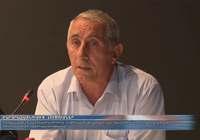
On September 30, 2019, a roundtable was organized to highlight the need for the protection of groundwater resources in Ararat Valley. With participation of the representatives from the Water Committee, Ministry of Environment, WUA representatives, ASPIRED project, academia, community heads, WPAN members. During the event, the letter with the petition and signatures was sent to the RA Prime Minister and the NA.
Best practice guide. Arsen shares his approach with young people
Ararat Valley fish-farms, especially small and medium ones, were involved in policy dialogue to regulate secondary water use and to legally differentiate volume of permitted groundwater extraction and tariffs to protect the rights of small and medium fisheries from the monopoly of large fish-farms. On-going discussions persuaded WRMA to initiate process of legal regulation of secondary water use.
Aratashen Mayor to announce September 30 as Groundwater Preservation Day in Ararat Valley

Coverage by Yerkir Media: Declaring Ararat Valley Groundwater Preservation Day - Coverage by Yerkir Media TV .
WATER USERS ASSOCIATIONS
Water User Associations (WUAs) are supplying irrigation water for most of the communities in Ararat Valley. They have power as water distributors and are known as organizations with lack of transparent governance, accountability to their constituents - water users, instead are perceived as “local offices” of the Water Committee.
The baseline study showed that the majority of water users did not trust WUAs. Therefore, WUAs were one of the main targets of the PURE Water BCC campaign. Through various campaign tools – advocacy, discussions on policy improvement, monitoring and technical assistance, the PURE Water tried to engage WUAs in the dialogue to reclaim their original trust and to contribute to the efficient management and use of ground water resources in Ararat Valley. At the beginning of the project, for a long time, the PURE Water was failing to approach WUAs: public phones and rare email addresses did not respond, no any website to get information. The project contacted the Water Committee and realized that can meet with WUAs only after informing the Water Committee and having an official letter from them, which the project received. However, the first few introductory meetings did not give any hope for constructive dialogue. The PURE Water adopted a bottom-up strategy to approach WUAs. Within the advocacy campaign in target communities, empowered local advocacy teams of Armavir region demanded their own copies of irrigation contracts, which were strangely kept with WUAs: once Armavir WUA comprehended that water users knew their rights, it gave-up and provided the water-user contracts, which was a unique case. Gradually, WUAs community employees were participating in different community events under the project. Change of the leadership of Water Committee also promoted the Armavir WUA to become more cooperative and proactive. The WUAs has made a bold step toward transparent and accountable governance. On Armavir WUA request, the PURE Water young “citizen scientists” developed a WUA website (www.armavirwua.am ), the first WUA website in Armenia. All financial and progress reports of the WUAs, as well as information about relevant policies and regulations are available on the website. It allows the water-users to submit an online request for irrigation water and calculate the amount of water the need for irrigation. So, the website ensures transparent governance by WUA and increased awareness of water users.
Armavir WUA leadership is discussing e-governance tools
Armavir WUAs opened-up its financial records for the review of the community “social auditors.” The results were reported to the water-users during public hearings. This was another unique case of transparency and accountability of Armavir WUA to its constituents.
Challenges and Recommendations
Challenges
Although PURE Water project promoted more transparent and accountable governance of Armavir WUA, other WUAs in Ararat Valley did not show willingness for cooperation and management in transparent way. They did not participate in the meetings and did not give feedback to the emails or emailed documents. Within PURE Water project some fish-farms demonstrated willingness to cooperate, share their best practices of water use and provide input for improvement of legislation. However, the big fish-farms are still controlling large amount of water resources and it is not quite clear if they use those resources efficiently, because they were not open to the dialogue during the project implementation.
Recommendations
The Water Committee needs to replicate the best practice of Armavir WUA to other WUAs. All WUAs need to have websites to ensure transparent governance and awareness of their constituents; upgrade its GIS system, connect it to the websites so that water users could access their personal information. The Government needs to encourage big fish-farms to reuse groundwater and apply other water saving technologies, The Government needs to improve policies and regulations to ensure that the predominant role of big fish-farms does not infringe the rights of small and medium fishfarms. The Government needs to develop an awareness plan regarding water resources management and use and ensure its implementation through its relevant national and local institutions. CSOs, media need to continue to identify gaps in water resource management and follow-up the process of continuous behaviour change. .

